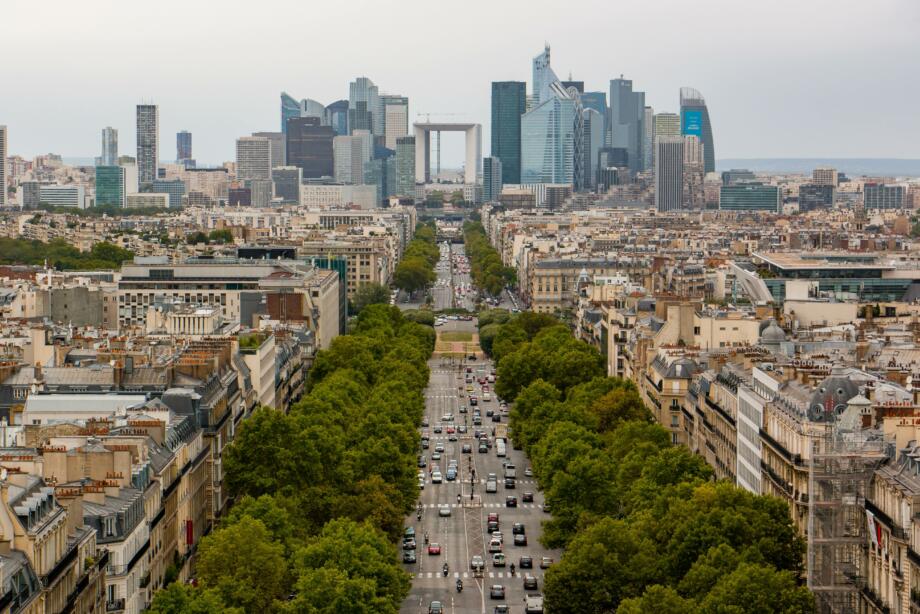Success of European low emission zones underlines benefits for Scotland

With Scotland’s Low Emission Zones (LEZs) introduced in May 2022, the success of hundreds of LEZ schemes across Europe offers a valuable insight to the benefits people can expect.
LEZs, which were introduced in the city centres of Aberdeen, Dundee, Edinburgh and Glasgow, aim to protect public health by improving air quality. Through keeping the most polluting vehicles out of the city centres where there are existing air quality issues, LEZs can help to transform cities into cleaner, healthier places to live, work and visit.
In Europe, 320 cities have LEZ schemes – an increase of 40% since 2019 – and according to recent research1 by The Clean Cities Campaign, this figure is set to rise by more than half again to 507 by 2025 as more cities take action to combat air pollution with places such as Paris, Brussels, Berlin and London planning stricter regulations within their existing zones in the next three years.
The significant growth of LEZ schemes across Europe underlines the widespread recognition of the benefits they bring and are to be welcomed as a way of reducing pollution for helping to protect people’s health.
Home to the world’s first LEZ is Sweden after it introduced its scheme in Stockholm in 1996.2 Since then, vehicle emission standards for entering the city centre have been continually increased. A 2014 study 3 concluded that air-borne pollutants were reduced in Stockholm’s inner city by between 10% and 14% while nitrogen oxide (NOx) emissions were reduced by around 8.5%.
The LEZ, combined with encouragement for people to use more public transport and active travel, delivered less traffic congestion in the inner city while a greater uptake of more environmentally friendly vehicles within the zone has led to a reduction in noise pollution. Following the success of Stockholm’s LEZ, the Swedish Government announced plans to give other municipalities the power to implement them.4
Berlin introduced its LEZ scheme, known as the Umweltzone, in 2008.
Based on a colour-coded system, stickers are placed on the windscreen,
categorising each vehicle according to its emission group. Only vehicles
with a green Euro 4 standard sticker are permitted to drive within the
zone.
Prior to introducing the Unweltzone, Berlin had launched a retrofitting programme for the city’s fleet of 1,400 diesel buses in 1999. Approximately 1,000 buses were retrofitted with filters which led to an almost 90% reduction in diesel soot emissions. By 2008, all Berlin’s buses were retrofitted.
As a result of its Umweltzone, there has been a significant reduction in
harmful emissions. By 2010, 25% of all diesel passenger cars and 18% of
light and heavy-duty vehicles were retrofitted. At Frankfurter Allee, a
major road in the inner city, particle tailpipe emissions from exhausts
decreased by 25% in 2008 and by 58% in 2010 compared with pollution
scenarios before the zone was introduced.5
Closer to home, LEZ measures implemented in London have proved a success as a result of the central London Ultra Low Emission Zone and 12 Low Emission Bus zones.
According to a 2016-2020 report containing air pollution monitoring data,6 London’s
NO2 levels exceeded the hourly legal limit for more than 4,000 hours in
2016. By 2019, this was down to just over 100 hours, a 97% decrease.
There have been considerable reductions in the long-term exposure to air
pollution for people in central London, with annual average NO2 levels
falling at every monitoring location in the capital. Between 2016 and
2019, there was an average reduction of 21% across London.
The success of LEZs in European cities demonstrates how they support a more sustainable transport system. They have led to increased use of public transport and active travel where people walk, wheel or cycle while also encouraging people to use more environmentally friendly vehicles. Ultimately, these LEZs have contributed to improved air quality which significantly benefits people’s health.
Visit here to find out more about Scotland’s LEZs: https://www.lowemissionzones.scot/
References:
https://www.lez-cc.info/enstockholm 2
http://www.eltis.org/discover/news/sweden-announces-new-lez-powers-city-authorities 4
https://ww2.arb.ca.gov/resources/inhalable-particulate-matter-and-health 5
